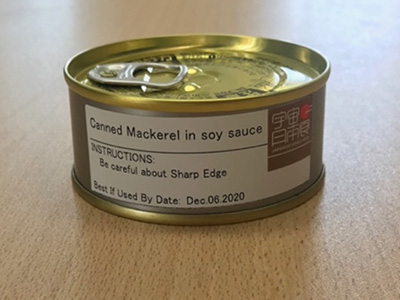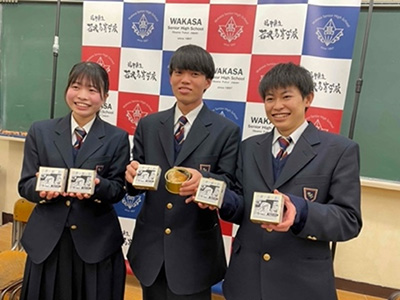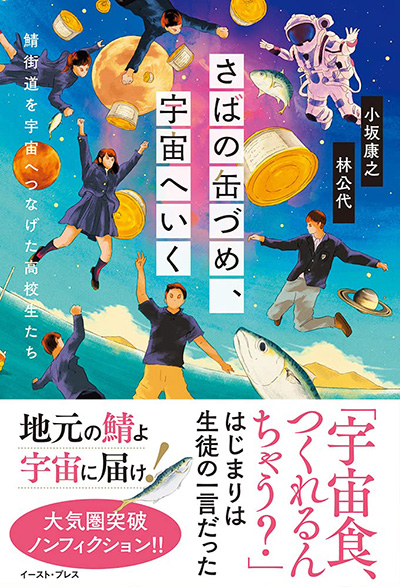Ocean Newsletter
No.528 August 5, 2022
-
Efforts towards Creating Carbon Neutral Ports (CNP)
ITO Hironori (Director for Policy Planning and Coordination, Industrial Port Policy Division, Ports and Harbours Bureau, Ministry of Land, Infrastructure, Transport and Tourism)
Around 60% of Japan’s CO2 emissions comes from power plants, iron works, and chemical producers, many of which are in port and waterfront areas. Therefore, in order achieve Japan’s goal of being net zero by 2050, it would be both effective and efficient to concentrate efforts towards decarbonizing ports. For this reason, the Ministry of Land, Infrastructure, Transport and Tourism is working on preparing environments for the introduction of hydrogen/ammonia fuel as well as creating carbon neutral ports (CNP) to decarbonize port areas. Our goal is that these efforts will help the whole country to achieve carbon neutrality.
-
The Role of Forests and Woods in Nurturing Rich Coastal Regions
KASAI Akihide (Professor, Faculty of Fisheries Sciences, Hokkaido University)
It has been believed for a long ago that land influences marine productivity, but it is not easy to grasp the full picture. It is against this backdrop that a recently developed method called “environmental DNA” has been gaining attention; compared to conventional methods, it allows us to more easily determine the organisms inhabiting certain environments and assess biodiversity. The environmental DNA has given rise to a clearer view of the relationship between forests, rivers, human communities, and seas.
-
Canned Mackerel: From Ocean Education to Space Food Development
KOSAKA Yasuyuki (Teacher, Wakasa Senior High Schoo)l
For the first time in history, canned mackerel developed by high school students - after 14 years of painstaking research and development - was provided to Japanese astronauts on the International Space Station. Behind this development were educational reforms, including goal setting and evaluation in ocean education as well as the formation of local communities.
Canned Mackerel: From Ocean Education to Space Food Development
[KEYWORDS] Ocean Education/Canned Mackerel/Space Food DevelopmentKOSAKA Yasuyuki
Teacher, Wakasa Senior High School
For the first time in history, canned mackerel developed by high school students - after 14 years of painstaking research and development - was provided to Japanese astronauts on the International Space Station.
Behind this development were educational reforms, including goal setting and evaluation in ocean education as well as the formation of local communities.
Canned mackerel developed by high school students taken into space
With a blinding light and thunderous roar, an H-IIB rocket took off from the Tanegashima Space Center. At that moment, canned mackerel - carrying with it the students’ passion and their community’s hopes - was launched into space. In the end, the rocket disappeared, as if sucked up by the blackness of space. In December 2020, astronaut Soichi NOGUCHI broadcast his first tasting report on YouTube: “It's juicy, full of flavor right through, and delicious.”*1 At last, the canned mackerel developed and produced by high school students had been sampled in space. That moment represented the realization of a dream born 14 years ago at Fukui Prefectural Obama Fisheries High School (now part of Wakasa Senior High School).
It all began with a student's off-hand comment. With the aim of promoting community food safety and human resources development, HACCP*2 was implemented at the manufacturing facilities of Obama Fisheries High School in 2006. Challenges were overcome by enhancing non-technical aspects, leading to HACCP certification for canned mackerel with only low-cost equipment modifications. The spark of inspiration happened in class. “Teacher, if HACCP was developed by NASA, why can’t our canned mackerel be used as space rations?” “Why not? Sounds interesting, let’s have a go.” But progress was not easily made. One year, they were sidetracked into developing “space creamy caramels,” which were popular at the time. Another year, no one carried on the project, leading to no progress at all. But work resumed, and the students prepared the application forms for JAXA Japanese space food certification *3 - which reached hundreds of pages – and carried out shelf life tests to obtain certification and research to improve the viscosity and flavor. The students took initiatives such as using kuzu arrowroot starch to increase the viscosity so that the juices do not float away in space. In addition, they set and tested a wide range of hypotheses to meet the steep challenge of delivering a rich taste and home-cooked flavor, as astronauts’ lose some of their sense of taste in space. At last, Japanese space food certification was obtained on November 1, 2018, marked by a message of congratulations from astronaut Koichi WAKATA: “From the Saba Kaido*4 to the International Space Station!”

 The canned mackerel, which obtained Japan Aerospace Exploration Agency (JAXA) space food certification, and students from Wakasa Senior High School who developed it.
The canned mackerel, which obtained Japan Aerospace Exploration Agency (JAXA) space food certification, and students from Wakasa Senior High School who developed it.
Ocean education in partnership with the local community
The notion of high school students developing canned mackerel for space may sound like a story of youthful enthusiasm and naivety, but it’s a milestone on the quest for ocean education, which should prove a useful reference for all forms of education.
Obama Fisheries High School was founded in 1895 as the first fisheries high school in Japan, with the aims of developing human resources for the local area and teaching fisheries technologies. Records show that it began manufacturing canned products the following year, which it exhibited alongside private-sector companies at fisheries expositions. Its programs to take students on field trips to fisheries sites as well as teach ways to utilize unused resources and new technologies for fishing enhanced student learning through the promotion of fishing villages. However, in recent years the declining student population and chronic shortage of teachers have led to many school closures and consolidations around Japan. Obama Fisheries High School was no exception, and it was consolidated into Wakasa Senior High School (a comprehensive academic school) to form the Marine Science Course in 2013.
This school closure/consolidation led to major changes in the formation and organization of the local community. Over the years, the school engaged directly with stakeholders with which it had built strong relationships through the “themed research” class that aimed to address local issues. These stakeholders consist of fishermen, fisheries processing companies, logistics businesses, university researchers, parents and guardians, and NPOs - as well as of course students – and the school listened to their diverse opinions face to face. Based on this work, the school leadership clarified the educational objectives and how they should be fostering their students, set evaluation methods, and created a curriculum. Ten years after establishment, the Marine Science Course features a curriculum suited to our times, is highly valued by society, and has delivered excellent results in terms of academic advancement and employment success of its graduates. The Course regularly engages with stakeholders in setting objectives, and the current key objective is “well-being.” Discussions are focusing on identifying the attributes and capabilities to achieve well-being, and how to nurture them through fisheries and ocean education*5.
All of this might seem detached from the topic of this article, but these are in fact critical elements for the successful development of Japanese space food. During the long 14 years of research, each year students took ownership of the Japanese space food development program as it was passed on from older to younger classes. Successfully clearing the strict food safety standards was due to the students’ efforts and - above all - their attitude of enjoying self-directed learning. The foundation of it all was setting objectives with stakeholders, which created an unwavering commitment to supporting students’ independence and curiosity in their learning
Evaluating the learning of students who created the canned mackerel
At this school, interview surveys of graduates are conducted and then analyzed using philosophical methods, with the results used to improve teaching methods. The interview results have shown that graduates vividly remember their proactive learning experience and are applying these experiences in their current activities. In addition, graduates expressed many examples of how their curiosity and interests were clarified through interactions and dialogues with others, leading to greater independence. While experiences are provided equally to those who receive them, “true experience” is fostered when students come to recognize what they have learned in the context of their society and peers. Ocean education - a practical discipline - provides not only the fascination inherent to the beautiful and soothing natural ocean environment, but also the opportunity to interact with a wide range of stakeholders. This interaction and the issues faced are complex, but studies have found that this complexity drives increased student motivation to solve problems. In other words, experiencing the ocean fosters individual initiative and facilitates real experience. On the other hand, it is also clear that teachers using overly assertive techniques or leading too firmly decreases student independence of thought, encourages rote learning, and fosters a passive attitude.
Real experience provides a foundation for students to consider the possibilities for their lives. To that end as well, it is important to promote ocean education, which provides a practical field of study, through the use of precise objectives and appropriate evaluations. I’ve presented the above information in a serious tone, but the actual process of objective setting and evaluation analysis is carried out not just by teachers but explored together with community stakeholders in a dynamic, enjoyable fashion. While acknowledging the teacher’s individuality, making students the center of their attention not only leads to recognizing the diversity among students but also the well-being of teachers. Ultimately, if teachers are not enjoying their work, the students will not enjoy themselves either. These are the educational reforms which contributed to the canned mackerel development. Details of the development process have been published in book form. Please do read more about the students’ efforts and learning. (End)
 “Canned Mackerel to Send to Space” by Yasuyuki KOSAKA and Kimiyo HAYASHI (Eastpress, January 2022). ISBN 978-4-781620-42-8
“Canned Mackerel to Send to Space” by Yasuyuki KOSAKA and Kimiyo HAYASHI (Eastpress, January 2022). ISBN 978-4-781620-42-8
- *1Astronaut Soichi NOGUCHI’s Life in Space 010: Space-Style Canned Mackerel Recipe, https://www.youtube.com/watch?v=1FOgXJlydt4
- *2HACCP stands for Hazard Analysis and Critical Control Points. It is a food safety management system developed in the United States in the 1960s to ensure the safety of space rations. From June 1, 2020, all food manufacturers in Japan are required to engage with HACCP.
- *3About Japanese Space Food Certification (JAXA) https://humans-in-space.jaxa.jp/en/biz-lab/med-in-space/healthcare/food/procedure/
- *4The Saba Kaido or “Mackerel Road” is the name given to a route between what is now the coastal Reinan district of Fukui Prefecture and the inland capital of Kyoto, where seafood, mainly mackerel, were transported.
- *5“Thoughts on Fisheries and Ocean Education after Teaching at Japan's Oldest Fisheries High School” by Yasuyuki KOSAKA, Ocean Newsletter No. 309 (published June 20, 2013)
